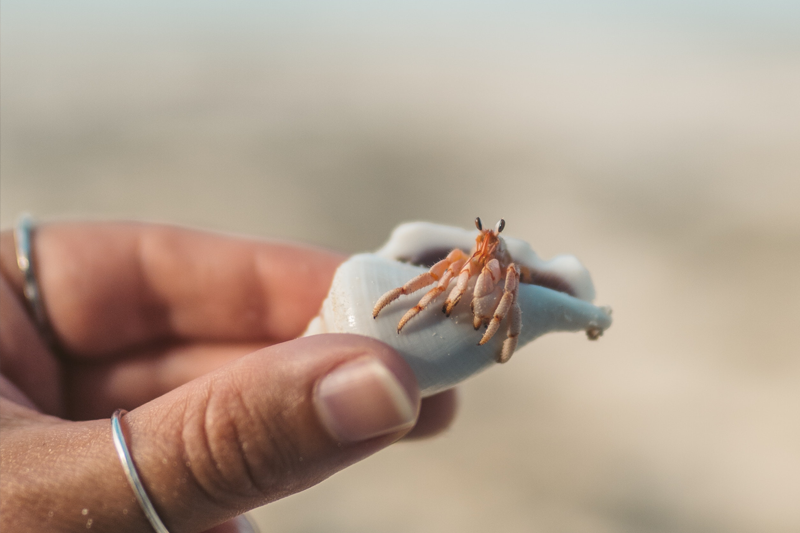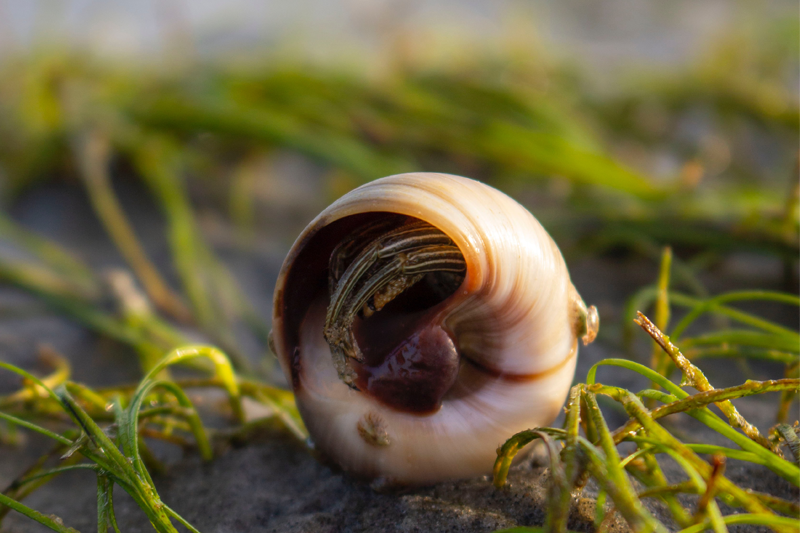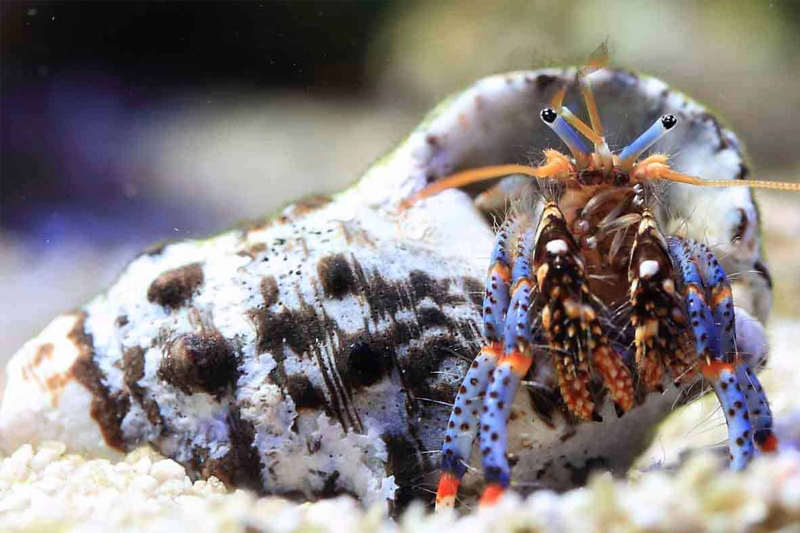These fun and weird facts showcase the fascinating and diverse characteristics of land hermit crabs, making them captivating subjects for observation and study.
- No Shell? No Problem: Land hermit crabs don’t have a hard exoskeleton like other crustaceans. Instead, they rely on salvaged snail shells for protection, carrying them around as portable homes.
- Home Swapping: Land hermit crabs are known for their “shell swapping” behavior, where they exchange shells as they grow. This process can lead to “shell fights” among crabs competing for desirable shells.
- Social Creatures: Despite their solitary nature, land hermit crabs often congregate in groups called “mobs” or “casts,” especially during mating seasons or when searching for new shells.
- Ambidextrous Claws: Land hermit crabs have one large claw and one small claw, but unlike some other crustaceans, they can use both claws interchangeably for various tasks.
- Bizarre Diet: Land hermit crabs are omnivores and will eat almost anything they come across, including fruits, vegetables, meat, algae, and even wood.
- Shell Color Preference: Land hermit crabs seem to have individual preferences for shell colors and patterns. Some studies suggest that they may prefer shells that match their natural environment or provide better camouflage.
- Temporary Abode: Land hermit crabs are constantly on the lookout for better shells. If they find an unoccupied shell that fits better than their current one, they’ll quickly switch homes.
- Shell Shopping: Land hermit crabs are picky about their shells. They often inspect multiple shells before choosing the perfect one, sometimes even trying them on for size.
- Eco-Friendly Decorators: Land hermit crabs often decorate their shells with bits of algae, sponge, or debris, which can provide camouflage and protection from predators.
- Climbing Connoisseurs: Land hermit crabs are skilled climbers and can scale trees, rocks, and even human-made structures with ease.
- Underground Retreat: Land hermit crabs dig burrows in the sand or soil to escape predators, regulate their body temperature, and molt safely.
- Air Breathers: Land hermit crabs have modified gills that allow them to breathe air, but they still need to keep their gills moist to prevent dehydration.
- Moonlit Migrations: Land hermit crabs often emerge from their burrows and migrate en masse to the water’s edge during the full moon to release their eggs into the ocean.
- Social Signals: Land hermit crabs communicate with each other through a combination of visual displays, tactile signals, and chemical cues.
- Anti-Predator Defense: When threatened, land hermit crabs can retreat into their shells and use their large claw to block the entrance, creating a barricade against predators.
- Slow Growth: Land hermit crabs grow slowly and may take several years to reach maturity, depending on factors such as temperature, humidity, and food availability.
- Survival Strategies: Land hermit crabs have evolved various survival strategies, including shell selection, burrowing, and social behavior, to thrive in diverse environments.
- Regeneration Abilities: Land hermit crabs have limited regenerative abilities and can regrow lost limbs or damaged tissues over time.
- Nocturnal Navigators: Land hermit crabs are primarily nocturnal, preferring to forage for food and explore their surroundings under the cover of darkness.
- Adaptable Adventurers: Land hermit crabs are highly adaptable creatures, capable of thriving in a wide range of terrestrial habitats, from tropical forests to coastal dunes.





